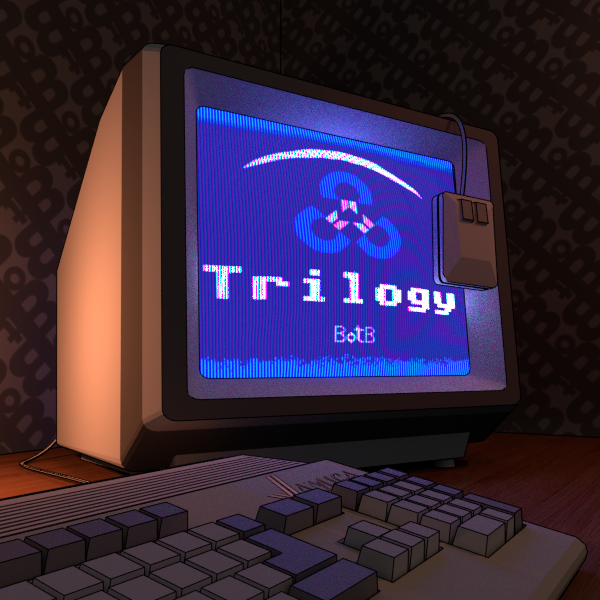74604
Well I understand what you mean by aimless, it sounds like you were experimenting and doing something akin to what analog musicians would call jamming. I think that's both an excellent way to learn the ins and outs of a system, to better prep you for future compositions, and also can result in some of the most unique, out-of-the-box compositions that will land in your repertory. And this piece is far from being a "mess" with "no melody." Your track flows between unorthodox time sigs from 10/4 of the first beat, 13/4 and then into a nice traditional 6/4 phrase, and finally that 7/4 section before the outro. The song has multiple distinctive melodies, all in key (your leads as well), and your leads take on a somewhat vocal quality.
Though you are American, there are many elements that remind me of the drum/vocal combo of the Lunsi performers, with the more pitched musical quality of the Dagbon drum providing the central melodies and the vocalist providing the lead. For example, https://youtu.be/zNLwXbpCm88 in this performance of Nag Biegu, you can hear that the vocalist's vibrato sounds very much like your chiptune vibrato; https://youtu.be/M7ZjJ9dVrHg In this performance of Makala, though completely improvisational and directionless, this simply choir of Central African vocalists create melodies and counter melodies that evoke similar characteristics of your track; and finally https://youtu.be/4jWvW0wE-qM in this traditional Abekor drum circle, you will hear similarities in meter and melody.
Much in the same way, I could compare the shifting meter and melodies to much of the music of China, such as https://youtu.be/q3uaNr0SdA4 in this clip where you hear a traditional Jingju performance that is inherently cinematic as there is a very visual performance that equals the importance of the music.
And I even see elements of our native country, such as https://www.youtube.com/watch?v=25ks-n-wsf8 this rendition of the Navajo dance song "Yeibichai" in which the lead vocal lines utilize similar expressionistic measure and melodic quality; and https://www.youtube.com/watch?v=ITNGpV_q4Vc in this rendition of "Gadasjot", an Iroquois Warrior's Stomp Dance, and https://www.youtube.com/watch?v=wDqOcX2zHng this rendition of "Shizhané'é", a Navajo Circle Dance, where the vocal melody, meter and even quality of the vocalists of Shizhane'e.
And would you call any of those an "aimless mess with no melody?" Even the many improvised offerings have great worth and value to the people of their society, as well as world music lovers. Your piece here may not have been as meticulously constructed as a well thought out traditional orchestration, but just because the track fails to adhere to the traditional mainstream, widely accepted aesthetics of Western Music, it doesn't mean the track is worth any less than those that do.
Anyway, great job! I'm sure you will end up making some very impressive pieces when do make something that you consider more serious, because this experimentation is already right on track. I like many of the elements you have, and you have implemented some decent effects such as the filtering on your bass. I'm not gonna sit here and say your track blew me away or anything, but I enjoyed it and I definitely look forward to seeing what you do as your experience grows.
Though you are American, there are many elements that remind me of the drum/vocal combo of the Lunsi performers, with the more pitched musical quality of the Dagbon drum providing the central melodies and the vocalist providing the lead. For example, https://youtu.be/zNLwXbpCm88 in this performance of Nag Biegu, you can hear that the vocalist's vibrato sounds very much like your chiptune vibrato; https://youtu.be/M7ZjJ9dVrHg In this performance of Makala, though completely improvisational and directionless, this simply choir of Central African vocalists create melodies and counter melodies that evoke similar characteristics of your track; and finally https://youtu.be/4jWvW0wE-qM in this traditional Abekor drum circle, you will hear similarities in meter and melody.
Much in the same way, I could compare the shifting meter and melodies to much of the music of China, such as https://youtu.be/q3uaNr0SdA4 in this clip where you hear a traditional Jingju performance that is inherently cinematic as there is a very visual performance that equals the importance of the music.
And I even see elements of our native country, such as https://www.youtube.com/watch?v=25ks-n-wsf8 this rendition of the Navajo dance song "Yeibichai" in which the lead vocal lines utilize similar expressionistic measure and melodic quality; and https://www.youtube.com/watch?v=ITNGpV_q4Vc in this rendition of "Gadasjot", an Iroquois Warrior's Stomp Dance, and https://www.youtube.com/watch?v=wDqOcX2zHng this rendition of "Shizhané'é", a Navajo Circle Dance, where the vocal melody, meter and even quality of the vocalists of Shizhane'e.
And would you call any of those an "aimless mess with no melody?" Even the many improvised offerings have great worth and value to the people of their society, as well as world music lovers. Your piece here may not have been as meticulously constructed as a well thought out traditional orchestration, but just because the track fails to adhere to the traditional mainstream, widely accepted aesthetics of Western Music, it doesn't mean the track is worth any less than those that do.
Anyway, great job! I'm sure you will end up making some very impressive pieces when do make something that you consider more serious, because this experimentation is already right on track. I like many of the elements you have, and you have implemented some decent effects such as the filtering on your bass. I'm not gonna sit here and say your track blew me away or anything, but I enjoyed it and I definitely look forward to seeing what you do as your experience grows.









